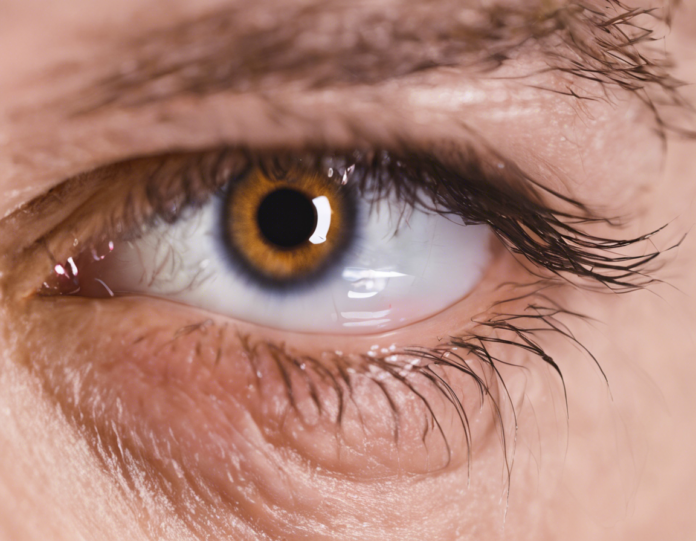Introduction
Moxifloxacin Eye Drops are a type of antibiotic used to treat and prevent bacterial infections in the eyes. They are commonly prescribed by ophthalmologists for conditions such as conjunctivitis, keratitis, and blepharitis. Moxifloxacin is a fourth-generation fluoroquinolone antibiotic that works by inhibiting the growth of bacteria. In this article, we will explore the various uses of Moxifloxacin Eye Drops, how they work, dosage guidelines, potential side effects, and other important information.
Uses of Moxifloxacin Eye Drops
-
Conjunctivitis: Also known as pink eye, conjunctivitis is a common eye infection that causes inflammation of the conjunctiva (the clear membrane that covers the white part of the eye). Moxifloxacin Eye Drops are often prescribed to treat bacterial conjunctivitis, which is caused by bacteria such as Staphylococcus aureus, Streptococcus pneumoniae, and Haemophilus influenzae.
-
Keratitis: Keratitis is an infection of the cornea, the clear dome-shaped surface that covers the front of the eye. Bacterial keratitis can be a serious condition that requires prompt treatment to prevent vision loss. Moxifloxacin Eye Drops are effective in treating bacterial keratitis and helping to alleviate symptoms such as pain, redness, and blurred vision.
-
Blepharitis: Blepharitis is a common eyelid inflammation that can be caused by bacterial overgrowth. Moxifloxacin Eye Drops can help reduce inflammation, redness, and irritation associated with bacterial blepharitis.
-
Prevention of Infections: In some cases, Moxifloxacin Eye Drops may be prescribed as a prophylactic measure to prevent eye infections following eye surgery or in patients with a compromised immune system.
How Moxifloxacin Eye Drops Work
Moxifloxacin belongs to a class of antibiotics called fluoroquinolones, which work by inhibiting the enzymes that bacteria need to replicate and grow. By interfering with the DNA replication process in bacteria, Moxifloxacin effectively kills the bacteria and helps clear up the infection. Moxifloxacin Eye Drops are formulated specifically for ophthalmic use, ensuring optimal penetration into the tissues of the eye to target the infection directly.
Dosage and Administration
The dosage of Moxifloxacin Eye Drops may vary depending on the specific condition being treated and the severity of the infection. In general, a typical dosing regimen involves instilling one to two drops into the affected eye(s) every 4-6 hours for 7-10 days. It is important to follow the dosage instructions provided by your healthcare provider and to complete the full course of treatment, even if symptoms improve before the medication is finished.
To administer Moxifloxacin Eye Drops:
– Wash your hands thoroughly before handling the eye drops.
– Tilt your head back and pull down the lower eyelid to create a small pocket.
– Hold the dropper directly over the eye and instill the prescribed number of drops.
– Close your eye and gently press on the inner corner to prevent the medication from draining out.
– Keep the eye closed for a few minutes to allow the medication to absorb.
– Repeat the process for the other eye if directed to do so.
Potential Side Effects
While Moxifloxacin Eye Drops are generally well-tolerated, some individuals may experience side effects. Common side effects may include:
– Eye irritation or burning
– Stinging sensation
– Blurry vision
– Redness or itching of the eye
– Sensitivity to light
If any of these side effects persist or worsen, contact your healthcare provider promptly. In rare cases, severe allergic reactions such as swelling of the face, throat tightness, or difficulty breathing may occur. If you experience any of these symptoms, seek immediate medical attention.
Precautions and Considerations
Before using Moxifloxacin Eye Drops, inform your healthcare provider about any existing medical conditions, allergies, or medications you are taking. It is essential to disclose any history of reactions to antibiotics or other eye medications. If you wear contact lenses, remove them before instilling the eye drops and wait at least 15 minutes before reinserting them, as some preservatives in the drops may be absorbed by contact lenses.
It is important to finish the full course of treatment as prescribed, even if symptoms improve, to prevent the development of antibiotic resistance. Do not share your medication with others, and store Moxifloxacin Eye Drops at room temperature away from moisture and heat.
FAQs (Frequently Asked Questions)
-
Can Moxifloxacin Eye Drops be used to treat viral eye infections?
Moxifloxacin Eye Drops are specifically designed to treat bacterial infections and are not effective against viral infections. Using these drops for viral conditions may not be beneficial. -
Are there any drug interactions with Moxifloxacin Eye Drops?
Moxifloxacin Eye Drops may interact with certain medications, including corticosteroids, nonsteroidal anti-inflammatory drugs (NSAIDs), and other eye drops. Inform your healthcare provider about all medications you are taking to avoid potential interactions. -
How long does it take for Moxifloxacin Eye Drops to work?
Improvement in symptoms such as redness, inflammation, and discharge is usually observed within a few days of starting treatment. It is essential to complete the full course of treatment as prescribed for optimal effectiveness. -
Can children and pregnant women use Moxifloxacin Eye Drops?
The safety and efficacy of Moxifloxacin Eye Drops in children and pregnant women have not been established. Consult a healthcare provider before using this medication in these populations. -
What should I do if I miss a dose of Moxifloxacin Eye Drops?
If you miss a dose, instill it as soon as you remember. However, if it is almost time for your next dose, skip the missed dose and resume your regular dosing schedule. Do not double up on doses to make up for a missed one. -
Can Moxifloxacin Eye Drops be used for prolonged periods?
Prolonged use of Moxifloxacin Eye Drops may lead to the growth of resistant bacteria. Use the medication for the prescribed duration and consult your healthcare provider if further treatment is needed. -
Are there any specific instructions for storing Moxifloxacin Eye Drops?
Store Moxifloxacin Eye Drops at room temperature away from moisture and heat. Avoid contaminating the dropper tip and ensure the bottle is tightly closed when not in use. -
Can I drive or operate machinery after using Moxifloxacin Eye Drops?
Moxifloxacin Eye Drops may cause temporary blurred vision or other visual disturbances. Avoid driving or operating machinery until your vision clears and you feel comfortable performing these activities. -
How often should I have follow-up appointments while using Moxifloxacin Eye Drops?
Your healthcare provider may schedule follow-up appointments to monitor your progress and assess the effectiveness of the treatment. Follow their recommendations for optimal care. -
What are the signs of an allergic reaction to Moxifloxacin Eye Drops?
Allergic reactions to Moxifloxacin Eye Drops may manifest as swelling, itching, rash, difficulty breathing, or dizziness. If you experience any of these symptoms, seek immediate medical attention.
In conclusion, Moxifloxacin Eye Drops are a valuable treatment option for bacterial eye infections such as conjunctivitis, keratitis, and blepharitis. By understanding how these eye drops work, following proper dosage guidelines, being aware of potential side effects, and taking necessary precautions, individuals can effectively manage eye infections and promote optimal eye health. Consulting a healthcare provider for personalized advice and care is essential for the safe and effective use of Moxifloxacin Eye Drops.


Recent comments